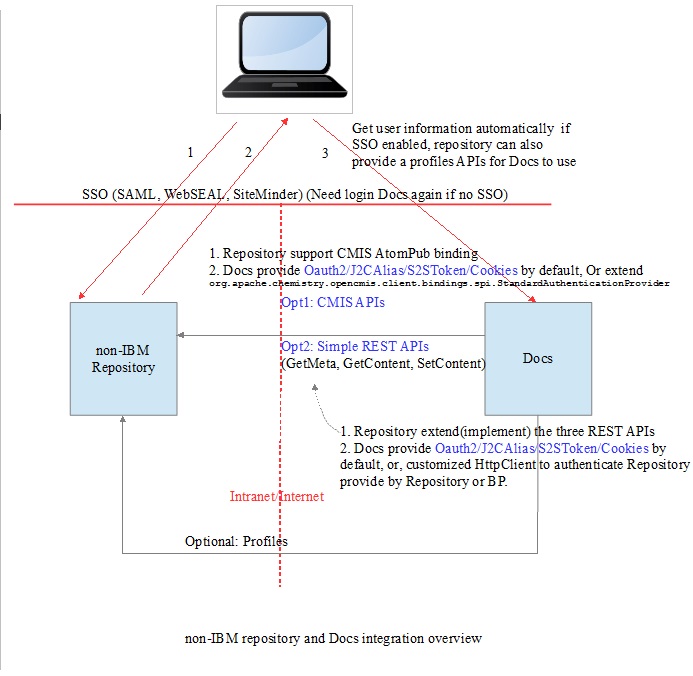Understanding integration with other repositories
This topic discusses several aspects of integrating HCL Docs with other repositories.
Integration diagram

User scenarios
In the file list view of the other repository's user interface (UI), users will see the
View or Edit button if they have HCL Docs entitlement.
- Click View to launch Viewer.
- Click Edit to launch a HCL Docs editor.
- Users can edit individually or co-edit in the HCL Docs editor window.
- When finished editing, users can save the file back to the repository.
Server side support
HCL Docs must be in the same data center as the other repository, but may be in a different domain.
Single Sign-On
When the repository and HCL Docs are in the same
domain, any of the following can be used for single sign-on:
- WebSeal
- SiteMinder
- SAML 2.0
- Repository implements Profile API, and HCL Docs trusts the repository authentication.
Note: If you are using client Cookie as Server-to-server authentication, Docs use JSESSIONID
in cookie to identify HTTP session. So you need to delete JSESSIONID in the cookie after a client
log out. You can also configure Docs to use a different key other than JSESSIONID to identify HTTP
session.
When the repository and HCL Docs are in different domains, configure SAML 2.0 only.
Server-to-server authentication support
When
the repository and HCL Docs are
in the same domain:
- OAuth2
- Client Cookie
- J2CAlias
- Server-to-server token
When the repository and HCL Docs are in different
domains:
- OAuth2
- J2CAlias
Sample workflow of the integration
